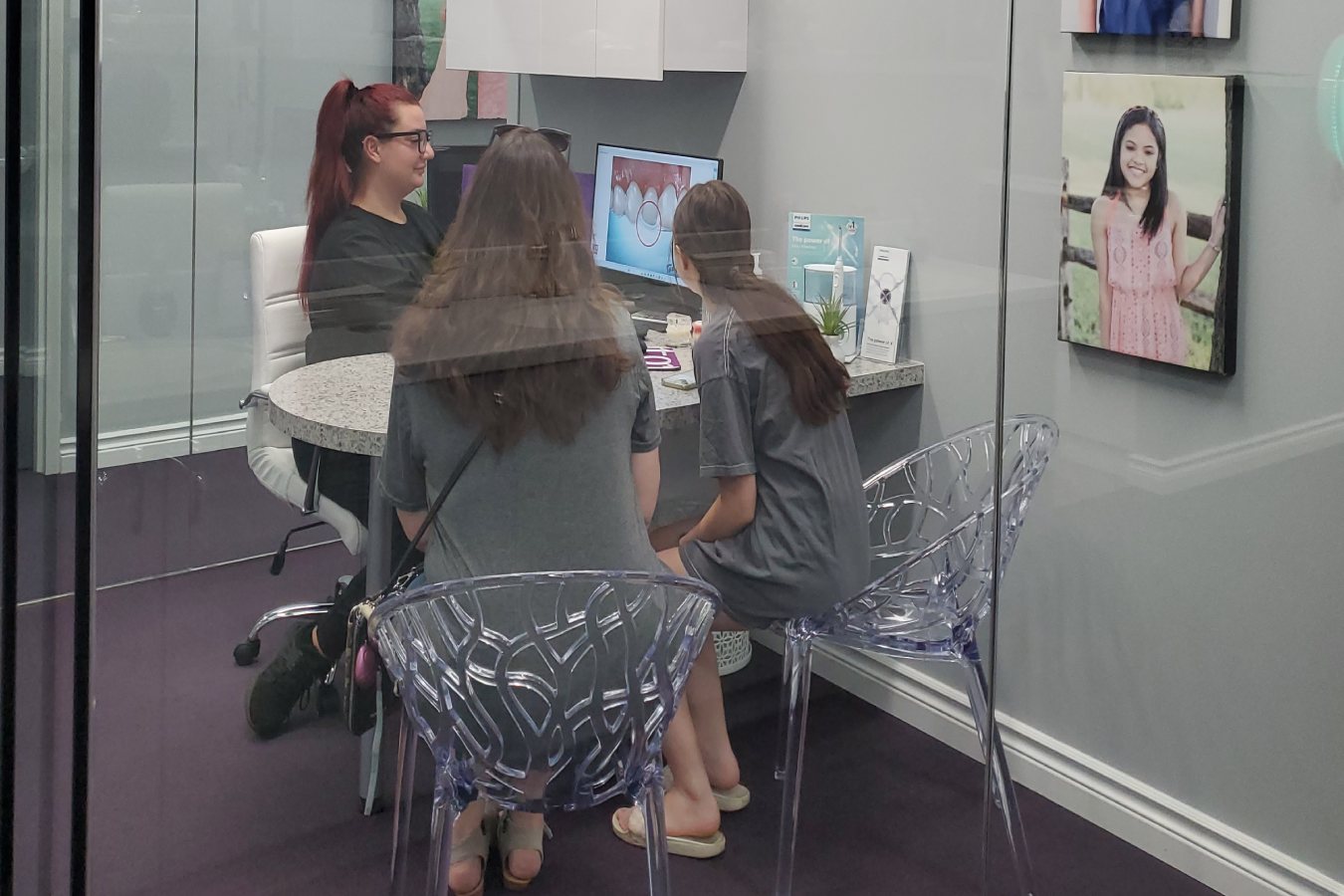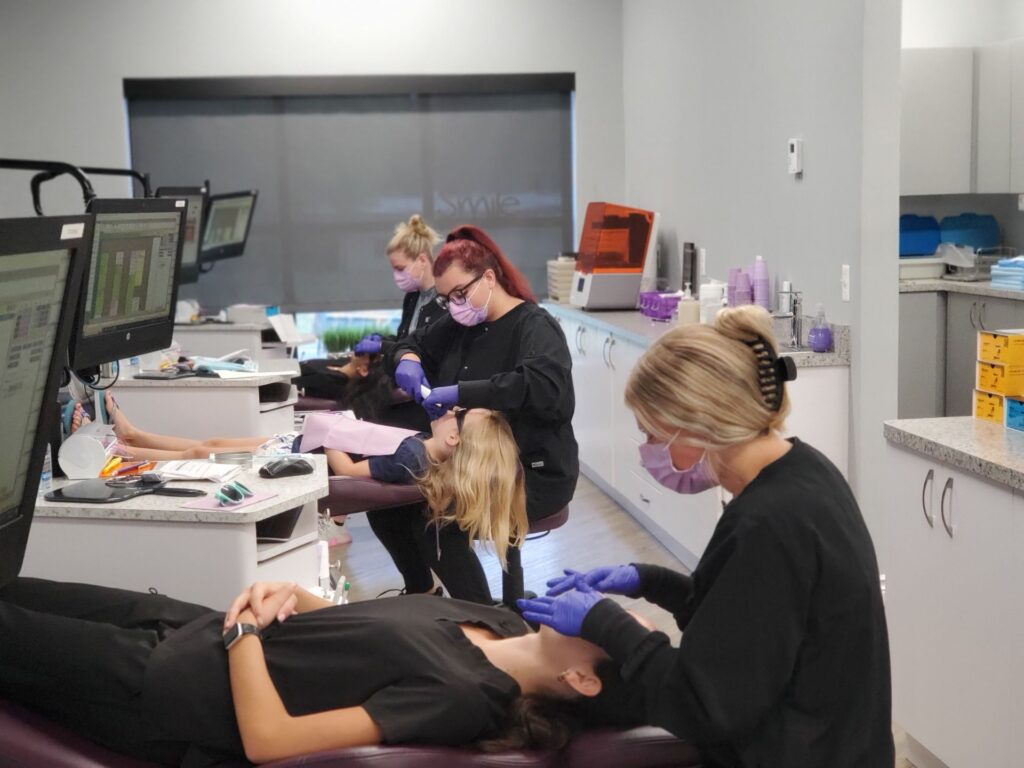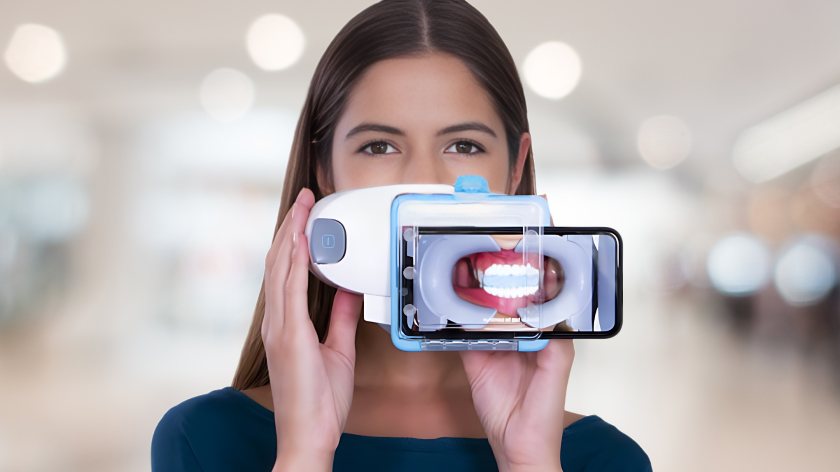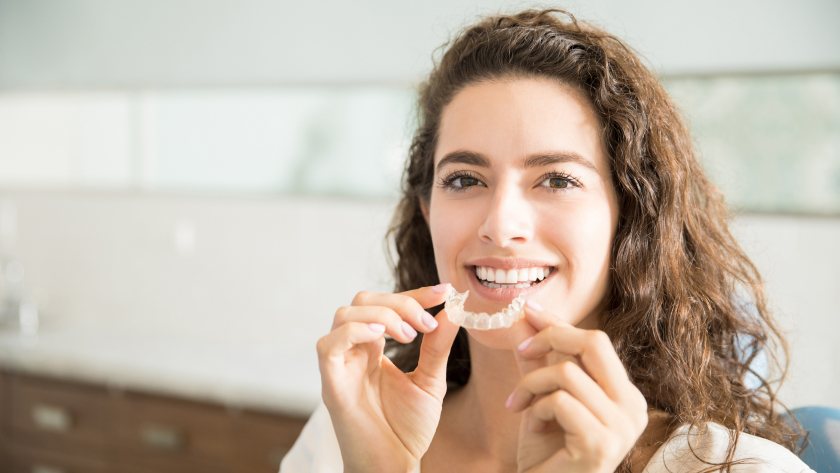Your First Visit
Your initial visit to our office is an important step in creating a lasting smile. We pride ourselves in providing the finest and most technologically advanced orthodontic treatment available. For new patients who have not started in treatment, there is no fee for this first orthodontic consultation and exam.
We want you to be an informed patient and for you to understand the steps and process in achieving the best results possible. We stress a team approach toward treatment in our office. Team meaning our patients, their families, our staff, Dr. Gostovich, and your family dentist.
During your first visit we will provide you with a tour of our office. You will be introduced to our team and provided with an explanation of how each phase of treatment works. A comprehensive examination will be performed, including a visual examination of the teeth, jaws, and facial areas. A digital panoramic x-ray and digital photographs will be taken to record the present status of the patient. These are used to provide you with a full-color presentation of the possible treatment options and results. If it is determined that treatment is necessary, digital x-rays and digital impressions will be taken. With the assistance of our digital diagnostic system we will evaluate facial and skeletal structure.
After a thorough evaluation of these records by Dr. Gostovich, a treatment plan will be developed and presented to you. Ample time will be allowed to answer all of your questions and address your concerns.

Financial Info
The cost of treatment is dependent on the severity of the patient’s problem, the types of appliances necessary to treat the patient and the length of time necessary for treatment. You will be able to discuss fees and payment options with our financial coordinator before treatment begins. We work hard to make orthodontics affordable.
Interest-Free Financing: We offer our own in-house, interest-free plan! An initial down payment is due when treatment begins with monthly payments over a specified number of months the patient is undergoing treatment. We accept most credit and debit cards, cash, checks, and ACH payments. We also accept HSA and flex-spending accounts.
External Financing: This third party financing allows you to make monthly payments over an extended period of time at low, competitive rates. Pre-approval is required.
Pre-Pay Discount: If payment is made in-full on or before the day of appliance delivery, we offer a fee discount. (If you have insurance, we will offer a discount for payment of your portion of the fee that will not be covered by insurance.)
Insurance Benefits: If your dental insurance has a specified orthodontic benefit, we will help in every way we can to file your claim and handle insurance questions from our office on your behalf.

At Home Care
Proper Hygiene
Fixed orthodontic appliances make tooth brushing and flossing more difficult. On the day your appliances are placed we will spend a considerable amount of time teaching you how to brush and floss with your new hardware.
Poor oral hygiene results in decalcification of the enamel (permanent white scars which are the early stages of decay), and once decalcification appears it is NOT REVERSIBLE!! That is why prevention is so important. In addition to decalcification, patients with poor oral hygiene are also at risk for tooth decay, gum disease and bone loss around the roots of the teeth. Our staff is particularly concerned with good oral hygiene so when your appliances are removed your smile is radiant!
Remember to keep regular dental appointments for cleanings while your appliances are in place!
Foods to Avoid
In general, when you are in orthodontic treatment, foods that are hard, sticky or chewy can be very damaging to orthodontic appliances. If your appliances are frequently broken due to neglect, your treatment time may be extended. The appliances are designed to withstand a certain amount of force but not force in excess caused by eating restricted foods or chewing on pens or pencils.
In addition, if you are wearing braces, you will need to cut the meat off the bone and the corn off the cob. Hand-held foods such as bagels or hard fruits and vegetables must be cut in pieces and chewed with the back teeth. Biting into these foods with your front teeth can break your appliances.
If you are wearing invisible aligners (Invisalign), you must remove the aligners to eat and drink.
For all patients: Sugary foods and snacks, particularly soda, should be consumed in moderation. Brushing and flossing is recommended after every meal and snack!

Emergency Care
Fortunately, it is rare for an orthodontic emergency to occur, but we know that many times pain and discomfort can feel like an emergency. Below you will find easy ways to treat the few emergency cases that can happen and may be treated at home so you can eliminate extra trips to the office. When a bracket is loose or a wire sticks out, you do not have to come to the office right away unless you are in pain or experience severe discomfort.
- General Soreness: It is common and normal to experience some soreness during orthodontic treatment. This can last three to four days after an adjustment. To alleviate discomfort, we recommend that patients eat softer foods and rinse with warm salt water after each meal. Pain relievers may also help. Parents can give children the recommended dosage of Ibuprofen or Tylenol if there is no history of adverse reactions or contraindications to these medications.
- Sore Spots: Occasionally patients may develop canker sores while wearing braces. There is no cure for canker sores, but to help relieve any discomfort we recommend placing wax on the problematic area of the braces and use Orabase or Orajel on the sore spot. Canker sores generally heal within 7 – 10 days. Please call us if you do not experience relief after this time period.
- Poking Wire Tie: If a wire tie begins to scratch your lip, you can gently tuck it under the main archwire with the tip of an eraser. Call our office for an appointment if the discomfort persists.
- Loose Teeth: Do not be surprised if teeth feel loose during treatment. Teeth need to loosen before they can move into their new positions.
- Lip Bumper Causing Sores: Remove the lip bumper by pulling it forward. If the lip bumper is tied in with elastic, cut the elastic first and then remove it. Call our office during regular business hours to schedule an appointment so we can adjust the bumper to a more comfortable position. Do not wear the lip bumper until we can see you for an adjustment.
- Separator/Spacer is Out: If a separator (spacer) falls out a day or two before your next appointment you do not need to have it replaced. If it falls out before then, call our office during regular business hours to schedule a quick appointment to replace the missing separator.
- Rubber Bands: Rubber band wear will cause sore teeth when you first begin wearing them (approximately the first 3 – 4 days). Once the teeth begin to move, this soreness will go away. Continue to wear the rubber bands during this initial period of soreness and take pain relievers if necessary. Do not continue wearing the rubber bands if you are unsure how they are to be worn. Call our office during regular business hours and we will let you know how to wear your elastics.
- Broken Archwire: Call our office during regular business hours to schedule an emergency visit. Place wax or a piece of wet cotton over the area if the wire is poking.
- Appliances or Headgear That Does Not Fit: Call our office during regular business hours and schedule an appointment to have the appliance or headgear adjusted. Do not try to force the appliance or headgear into place.
- Loose Band or Bracket: Call our office during regular business hours and schedule a repair appointment. If the loose band or bracket is irritating the gums or cheek, place wax over the area. Remember to brush very well around the loose appliance, as it may tend to trap plaque.
- Missing or Broken Elastic Ties: Call our office during regular business hours and schedule an appointment to have missing or broken ties replaced. If the tie is missing or broken, the tooth can drift away from the archwire. This is particularly a problem if you are wearing rubber bands.
Dental Monitoring Tutorial

At Home Care for Invisalign

At Home Care for Braces
